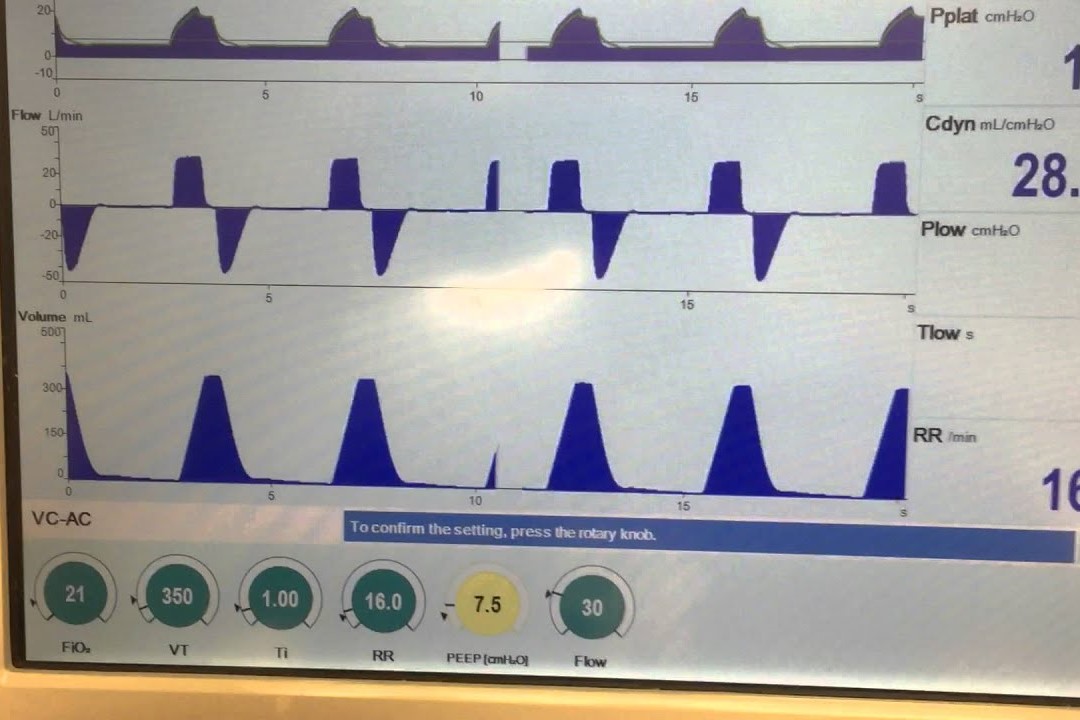
Positive End Expiratory Pressure (PEEP): what is it?
PEEP is an intervention used to keep the alveoli open when medical conditions are present that predispose them to collapse
PEEP in pulmonary ventilators
A collapsed alveolus requires a significantly larger breath to reopen than a partially constricted alveoli that still has air in it.
For this reason, many ventilators have an option to keep the airway pressurized during exhalation, this is identical to the positive pressure seen in CPAP/BPAP machines, with the exception that patients do not need to be spontaneously ventilating.
CPAP vs PEEP
Continuous positive airway pressure is the continuous level of airway pressure (above atmospheric) throughout the whole respiratory cycle.
Positive end-expiratory pressure maintains airway pressure above atmospheric at the end of expiration.
CPAP is used only with spontaneous respirations, whereas PEEP can be used with both mechanical ventilation and spontaneous breathing
They are similar in that they both provide positive airway pressure to prevent alveolar collapse, PEEP at the end of expiration and CPAP during the entire respiratory cycle (CPAP incorporates PEEP).
Due to the increased amount of air in the lung due to positive pressure, they both also increase lung compliance, allowing the lungs to expand and contract more easily.
PEEP, Indications and Complications
INDICATIONS: PEEP is commonly used in patients who are suspected of having a pathology that predisposes their alveoli to collapse, this is generally due to a large amount of fluid in the lungs.
As with CPAP; COPD, heart failure, and near drowning are common indications.
Unlike CPAP, unconsciousness and/or the inability to spontaneously ventilate are indications not contraindications to PEEP.
The positive pressure not only keeps alveoli expanded and improves oxygenation by increasing the functional residual capacity, but also helps drive out water (drowning), secretions (CHF), and improves aeration (COPD).
COMPLICATIONS: The complications of PEEP are identical to the complications of endotracheal intubation, as outlined in the section “Endotracheal intubation.”
PEEP has some unique physiologic effects, it decreases venous return to the heart, which leads to reduced cardiac output. It can also increase intracranial pressure above that of standard ventilation.
The risk of pneumothorax is also slightly increased versus standard ventilation.
The risk of pneumothorax is enhanced in cases of significant chest trauma (rib fractures, sternal fracture, or flail chest).
Be cautious when using PEEP in these patients and be prepared to relive a potential tension pneumothorax.
Post Intervention Care
The post-intervention care of a patient on PEEP is identical to one that in intubated, be a little more cautious about the potential for pneumothorax, as PEEP theoretically increases the risk of pneumothorax slightly.
Read Also:
Emergency Live Even More…Live: Download The New Free App Of Your Newspaper For IOS And Android
Oxygen Reducer: Principle Of Operation, Application
Ambu Bag, Salvation For Patients With Lack Of Breathing
Supplemental Oxygen: Cylinders And Ventilation Supports In The USA
Oxygen Reducer: Principle Of Operation, Application
Basic Airway Assessment: An Overview
Airway Management After A Road Accident: An Overview
Tracheal Intubation: When, How And Why To Create An Artificial Airway For The Patient
Oxygen Cylinders: Functions, Types, Selection Criteria
Blind Insertion Airway Devices (BIAD’s)
Oxygen-Ozone Therapy: For Which Pathologies Is It Indicated?
Hyperbaric Oxygen In The Wound Healing Process
Venous Thrombosis: From Symptoms To New Drugs
What Is Intravenous Cannulation (IV)? The 15 Steps Of The Procedure
Nasal Cannula For Oxygen Therapy: What It Is, How It Is Made, When To Use It
Pulmonary Emphysema: Causes, Symptoms, Diagnosis, Tests, Treatment
Extrinsic, Intrinsic, Occupational, Stable Bronchial Asthma: Causes, Symptoms, Treatment
A Guide To Chronic Obstructive Pulmonary Disease COPD


